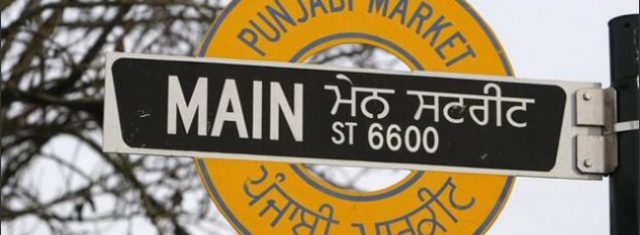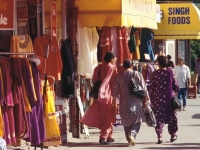Lifestyle
Punjabi market in Canadian cities
A reflection on ethnic enclaves

USPA NEWS -
Punjabi market in Canadian cities: A reflection on ethnic enclaves-Are ethnic enclaves a good or bad thing for Canadian cities? Should immigrants assimilate and disperse into mainstream English and French speaking communities or cluster together in their own ethnic enclaves? I am most familiar with South Asian settlement in British Columbia, especially the emergence of a vibrant Punjabi market district in Vancouver and Surrey. Vancouver has a population of approximately 600,000; 49% people in Vancouver have English as their mother tongue and about 3% speak Punjabi as their mother tongue. In Surrey, which has a population approaching 500,000, English is the mother tongue of 56% populace and a significant 19% speak Punjabi as their mother tongue.
When Punjabi Sikh settlers first came to British Columbia in the late 1800's and early 1900's, it could be argued that ethnic enclaves were a necessity. Many Sikh immigrants faced severe racial discrimination due to the local population being concerned that the Sikh immigrants may work for less and take their jobs. The Sikhs were different with their turbans and traditional customs. The Sikhs gathered and lived together for support, to afford a place to live in, and to earn a living. The early Chinese and Japanese settlers faced considerable discrimination as well. It is not surprising, therefore, that the historical foundation was laid for the eventual realization of ethnic enclaves like Chinatown and Punjabi market. These ethnic enclaves were essentially in response to difficulties in integration.
Ethnic enclaves are not the same as ethnic ghettos, which are common in the USA, especially among some impoverished African-American communities in major American cities. Canada has a much stronger social safety net, official multiculturalism policy and a much more healthy approach to immigration than the USA. Nonetheless, perhaps the large impoverished and somewhat neglected Aboriginal population in the Downtown Eastside of Vancouver is the closest thing to an ethnic ghetto in Canada. It is important to note, however, that the history, settlement patterns, public safety issues, government response, and approach to poverty and social problems in the Downtown Eastside is probably very different than the American experience.
The Punjabi ethnic enclaves in Vancouver and Surrey are actually thriving middle class communities and commercial districts. Most members of the community are property owners and their children are becoming professionals such as doctors, lawyers, and engineers and contributing to Canada. This does not mean there are not problems in the community such as organized crime, gender selection, and lack of integration and language problems. In fact, you can go to some popular fast food restaurants in Surrey and the person at the front counter cannot even speak fluent English.
Liability for this article lies with the author, who also holds the copyright. Editorial content from USPA may be quoted on other websites as long as the quote comprises no more than 5% of the entire text, is marked as such and the source is named (via hyperlink).






